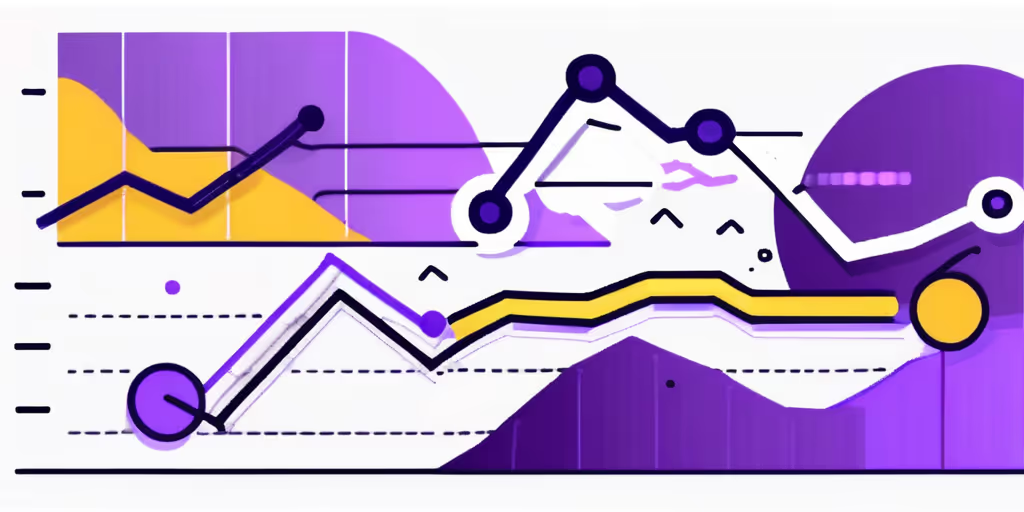
SmartScout is an Amazon market research tool that can provide valuable insights into the world of online selling.
For new business owners looking to make their mark on the Amazon marketplace, as well as experienced sellers and brands looking to stay ahead of the competition, SmartScout can be an invaluable resource. With its comprehensive suite of features and user-friendly interface, SmartScout simplifies the process of finding selling opportunities and researching competitors.
Before delving into the meaning of BSR, it's important to understand the basics. BSR stands for Best Sellers Rank, which is a metric used by Amazon to determine the popularity of a product within its respective category. A lower BSR indicates a higher level of sales, while a higher BSR suggests lower sales. Essentially, BSR provides a snapshot of how well a product is performing in the marketplace.

BSR is an algorithmically determined ranking that assigns a numerical value to each product listed on Amazon. This ranking is updated hourly and takes into consideration factors such as sales velocity and historical sales data. It allows sellers and buyers to quickly identify popular products in a particular category.
The concept of BSR was introduced by Amazon in 1997, shortly after the company's founding. It was designed as a way to help customers find the most popular and bestselling products in different categories. Over the years, BSR has become a vital tool for sellers, providing them with valuable market insights and a competitive edge.
But how exactly does BSR work? The algorithm behind BSR takes into account various factors to determine a product's ranking. Sales velocity, which refers to the rate at which a product is selling, plays a crucial role. The higher the sales velocity, the lower the BSR. Additionally, historical sales data is analyzed to assess a product's performance over time. This helps Amazon identify consistent bestsellers and highlight them with lower BSRs.
Furthermore, BSR is category-specific, meaning that a product's rank is relative to its competitors within the same category. For example, a BSR of 500 in the Electronics category may indicate a highly popular product, while the same BSR in the Home & Kitchen category may not carry the same weight. This category specificity allows sellers and buyers to make more informed decisions based on the context of the product's performance.
Over the years, BSR has evolved to become more than just a ranking system. It has become a powerful tool for sellers to gauge market demand and adjust their strategies accordingly. By monitoring the BSR of their products, sellers can identify trends, measure the impact of marketing campaigns, and optimize their inventory management. Additionally, buyers can rely on BSR to discover new and trending products, making their shopping experience more efficient and enjoyable.
BSR, or Best Sellers Rank, plays a crucial role in market analysis, guiding sellers in their decision-making process and helping them understand market trends. It also has a direct impact on a seller's sales and profitability. But what exactly is BSR and why is it so important?
BSR is a metric used by e-commerce platforms, such as Amazon, to rank products based on their sales performance within a specific category. The lower the BSR, the higher the sales volume of a product. This ranking system provides valuable insights for sellers, allowing them to gauge the popularity and competitiveness of their products in the market.
By analyzing the BSR of products within their category, sellers can identify market trends and consumer preferences. This allows them to make data-informed decisions about the products they sell, ensuring they are meeting the demands of the market. For example, if a seller notices a rising trend in products with lower BSRs, they can adjust their inventory or marketing strategies to capitalize on this trend and stay ahead of the competition.
Moreover, BSR can also help sellers identify potential gaps in the market. By analyzing the BSRs of different products, sellers can identify categories or niches that are underserved or have less competition. This presents an opportunity for sellers to introduce new products or cater to a specific target audience, increasing their chances of success.
A higher BSR indicates lower sales, making it vital for sellers to strive for lower rank numbers. Products with lower BSRs are more likely to attract more customers and generate higher sales. This, in turn, can lead to increased profit margins and business growth. Sellers who consistently monitor and improve their BSRs have a better chance of staying competitive and maximizing their sales potential.
Additionally, a lower BSR can also improve a seller's visibility on e-commerce platforms. Many customers rely on BSR as an indicator of a product's popularity and quality. When a product has a lower BSR, it is more likely to appear higher in search results, increasing its visibility to potential customers. This increased visibility can result in more organic traffic and sales for the seller.
BSR is a valuable metric that provides crucial insights for sellers in the e-commerce industry. By analyzing BSRs, sellers can make informed decisions, identify market trends, and improve their sales and profitability. Understanding and actively managing BSR can give sellers a competitive edge in the ever-evolving world of online business.
Understanding how BSR numbers are calculated and knowing the factors that influence them is key to making sense of the data.
When it comes to deciphering the mysterious world of Amazon's Best Sellers Rank (BSR), it's important to delve deeper into the inner workings of this algorithm. How exactly are these numbers calculated? What factors come into play? Let's take a closer look.
Amazon's algorithm takes into account a multitude of factors when calculating BSR numbers. It's not just a simple tally of sales, but a complex equation that considers various elements to determine a product's ranking.
One of the key factors is the product's sales velocity, both recent and historical. This means that not only the number of sales, but also the rate at which they occur, is taken into consideration. A product that consistently sells well over time will have a higher BSR than one that experiences sporadic bursts of sales.
Additionally, the algorithm compares the product's performance to others in its category. This means that even if a product has high sales, if it is outperformed by other similar products, its BSR may not be as impressive.
Now that we have a better understanding of how BSR numbers are calculated, let's explore the factors that can influence them.
Sales performance is undoubtedly a major factor. The more units a product sells, the higher its BSR will be. However, it's not just about the quantity of sales, but also the consistency. A steady stream of sales will have a more positive impact on BSR than a sudden spike followed by a lull.
Competition within the category is another crucial element. If a product is in a highly competitive category with numerous similar offerings, it may be more challenging to achieve a high BSR. Standing out from the crowd becomes essential in such cases.
Pricing is also a significant factor. A product that is priced competitively and offers good value for money is more likely to attract buyers and achieve a higher BSR. However, it's important to strike a balance, as pricing too low may lead to lower profit margins and pricing too high may deter potential customers.
Product visibility is yet another factor that can greatly influence BSR. A product that is easily discoverable, well-optimized with relevant keywords, and has a compelling product listing is more likely to attract potential buyers and boost its BSR.
Last but not least, customer reviews play a vital role in determining a product's BSR. Positive reviews not only build trust and credibility but also encourage potential buyers to make a purchase. On the other hand, negative reviews can significantly impact a product's BSR and overall sales performance.
With these factors in mind, sellers can strategically work towards improving their BSR rankings and gaining a competitive edge in the Amazon marketplace.
While BSR (Best Sellers Rank) is a valuable metric used by sellers on e-commerce platforms to gauge the popularity of their products, it's important to recognize its limitations and not rely solely on it when making business decisions.
BSR provides sellers with a snapshot of how well their products are performing in relation to others in the same category. However, it's crucial to consider other factors that contribute to a product's overall success, such as profitability and customer demand.
One common misconception is that BSR is the sole indicator of a product's success. While it provides valuable insights into a product's popularity, it does not take into account important factors like profit margins and customer satisfaction.
For example, a product may have a high BSR but a low profit margin due to high competition and low pricing. On the other hand, a product with a lower BSR may have a higher profit margin because it caters to a niche market with less competition.
Relying solely on BSR as a measure of success can be risky for sellers. While a high BSR indicates a product's popularity, it does not guarantee profitability or long-term success.
It's possible for products with lower BSRs to have higher profit margins, as they may have found a unique selling proposition or targeted a specific customer segment effectively. Conversely, products with higher BSRs may have lower profit margins due to increased competition and the need to lower prices to maintain sales volume.
Therefore, it's important for sellers to consider the bigger picture and analyze various metrics, such as profit margins, customer reviews, and market trends, to make informed decisions about their products.
Strategies for enhancing BSR can help sellers optimize their performance and increase their chances of success.
Firstly, sellers should focus on consistently providing high-quality products and exceptional customer service. Positive customer reviews and ratings can greatly improve a product's BSR. Additionally, competitive pricing and effective marketing strategies can also boost sales and improve BSR rankings.
Achieving a high BSR ranking can lead to long-term benefits, such as increased visibility, higher customer trust, and improved sales. It can also serve as social proof,
attracting more customers and establishing a seller as a trusted brand within their niche.
BSR is an important metric for sellers on Amazon. Understanding its meaning, interpreting the numbers, and recognizing its limitations can help sellers make more informed decisions and improve their overall performance. By utilizing tools like SmartScout, sellers can gain a deeper understanding of their opportunities and competition, leading to potential success in the highly competitive world of e-commerce.
Ready to harness the power of BSR and drive your Amazon sales forward?
SmartScout is here to elevate your e-commerce game. Discover hidden opportunities, gain unparalleled market insights, and stay one step ahead of your competitors with our comprehensive analytics tools. Don't miss out on the chance to optimize your Amazon strategy.
Love SmartScout in 7 days, or get your money back!
